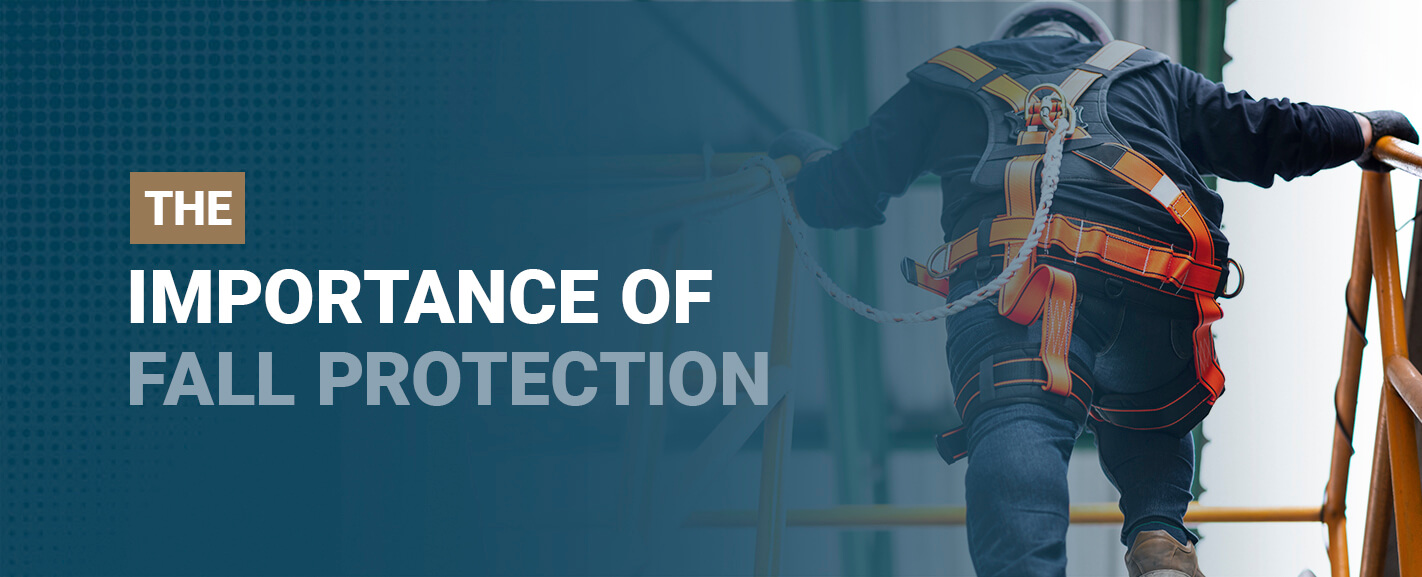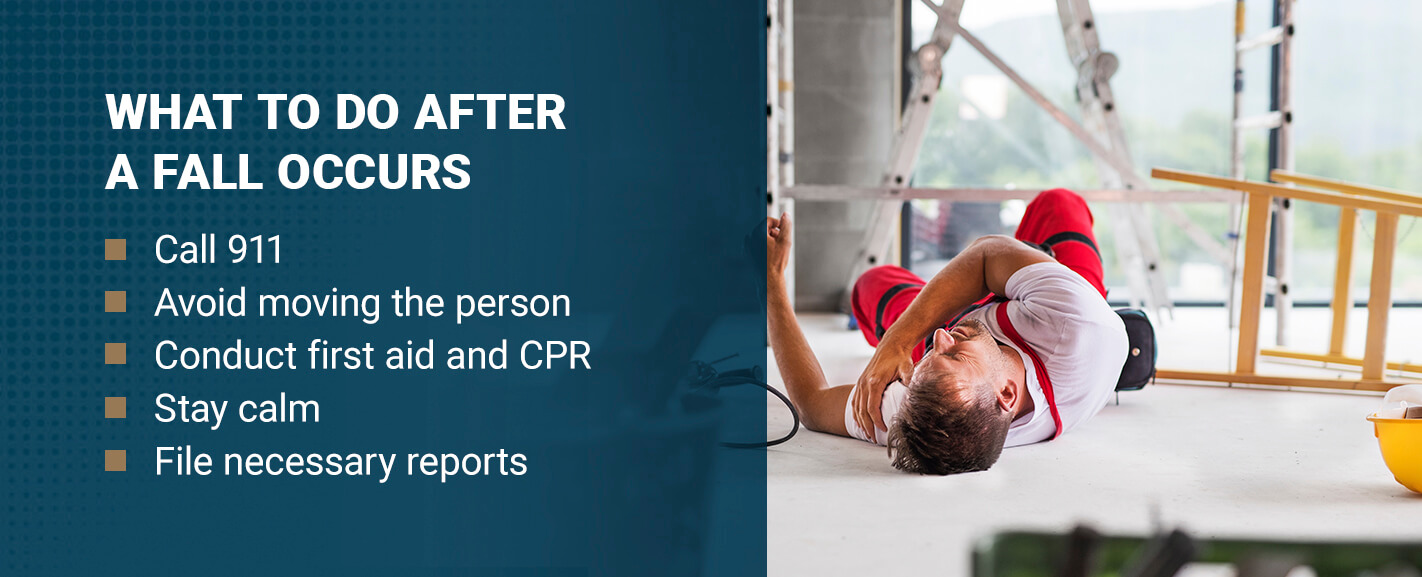
Fall protection is a set of methods and systems designed to prevent falls and injury in the workplace. Because falls are one of the most common causes of workplace injuries and fatalities, fall protection is vital to keeping employees safe in a variety of industries, ranging from construction to shipyards. As an employer, you need to take fall protection safety measures before workers can even enter a job site.
Understanding the basics of fall protection and its importance can mean the difference between your employees going home every night and a hospital trip. Learn what the Occupational Safety and Health Administration (OSHA) requires of employers so you can keep your employees safe and avoid violations.
Why Is Fall Protection Important?
Falls are among the most common cause of fatalities in the construction industry, accounting for nearly 38% of fatalities in 2019. While falls tend to involve several factors, proper training and safety equipment can typically prevent them. Fall protection measures help prevent falls, which can reduce the number of workers that get injured on the job.
One of the most significant benefits of fall protection is that it can save lives. Fall protection keeps workers from falling and getting seriously injured. As an employer, your workers’ safety should be a top priority, and you should stress the importance of fall protection to your workers, as well.
What Can You Do to Reduce Falls?
Luckily, there are many ways you can help prevent falls in the workplace. To start, it’s crucial to think about potential fall hazards before work even begins. Anticipating risks enables you to implement the proper fall protection before injuries occur. This process is often referred to as a hazard assessment. Analyze the different ways a worker might fall and how you can counteract it.
As you assess the work area, create a fall protection plan based on what fall protection systems are necessary. Providing your workers with the proper fall protection is your responsibility. Take a look at your workplace to see if any of these methods of fall protection are applicable:
- Guardrail systems: Guardrails are barriers installed to prevent workers from falling over an edge to a lower level.
- Safety net systems: Safety nets are installed under workspaces that require employees to be suspended at heights or over machinery. For example, safety nets would be applicable under skywalks or bridges.
- Personal fall protection systems: You can use these systems — also known as personal fall arrest systems — to safely stop workers before they fall to lower levels. These systems are used to anchor the worker to the level they’re working at.
- Warning lines: Warning lines are commonly used on roofs to draw attention to unprotected sides and edges. Warning lines warn workers of hazards nearby so they can avoid risks.
- Controlled access zones: Controlled zones are areas where specific work is being done without conventional fall protection. Access to these areas is typically limited to only the necessary personnel to prevent overcrowding hazardous areas.
In addition to these fall protection methods, implementing safe work practices and providing thorough training can help reduce falls in the workplace. You may have proper fall prevention systems in place, but without proper training on how to use them, your workers will still be at risk.

What to Do After a Fall Occurs
If one of your workers does fall, it’s crucial you and your other employees know what to do. Knowledge of CPR and first aid can be the difference between life and death in some accidents. While your actions will depend on the severity of the fall and the individual’s injuries, here are a few things to keep in mind:
- Call 911: The first thing to do is call 911. Do so immediately, in case the worker sustained severe injuries needing medical attention.
- Avoid moving the person: It’s best to avoid moving the individual who fell. Try to keep them from getting up or moving, too, as this can potentially worsen any internal injuries.
- Conduct first aid and CPR: If the injured individual is bleeding, apply gentle pressure to try and stop it. You should also check to see if the person is conscious, breathing, and has a pulse. If there’s no pulse, begin and continue CPR until medics arrive.
- Stay calm: While these situations can be stressful and frantic, staying calm is essential for everyone involved. If you’re calm, you’ll be better able to help the injured person. Additionally, keep the injured worker calm and assure them they’ll be getting help soon.
- File necessary reports: Your company may have its own process for filing incident reports. Additionally, remember to report any serious injuries or fatalities to OSHA.
OSHA Fall Protection Requirements for Employers
OSHA requires employers to provide fall protection to keep employees safe and prevent falls from overhead or into holes in walls and floors. Here are some important OSHA requirements to remember as an employer:
- Assessing the site: OSHA requires hazard assessment. The employer must evaluate the site and determine if fall protection is necessary. If it is, the employer must also select the fall protection methods and supply workers with the systems free of charge.
- Various elevation requirements: OSHA lists specific minimum heights for certain operations, in which employers are required to provide fall protection. For example, fall protection is required at heights of 8 feet in longshoring jobs, 6 feet for construction, 5 feet for shipyard operations, and 4 feet in general industry workplaces. You also need to provide fall protection regardless of the distance if employees are working over dangerous machinery and equipment, like conveyor belts.
- Clean work environment: Employers are required to keep working conditions clean, dry, and free of known hazards to prevent slipping and tripping.
- Employee training: All workers need to be trained appropriately about job hazards and fall protection in a language they understand.
Purchase NASP’s Walking-Working Surfaces and Fall Protection Specialist (WWS) Course Online
Part of ensuring your employees are prepared for hazardous work environments is adequate training. There are many ways to provide training for your employees. It may be most beneficial to consider in-depth certificate courses offered by the National Association of Safety Professionals (NASP).
In our WWS course, we thoroughly cover OSHA standards and training on fall protection systems. Students get certified at the end of the course, which enables them to identify workplace hazards and implement various fall protection methods.
Purchase our WWS online course to ensure your employees are adequately trained, or feel free to contact us for more information.
Purchase Our Walking-Working Surfaces And Fall Protection Specialist Course







